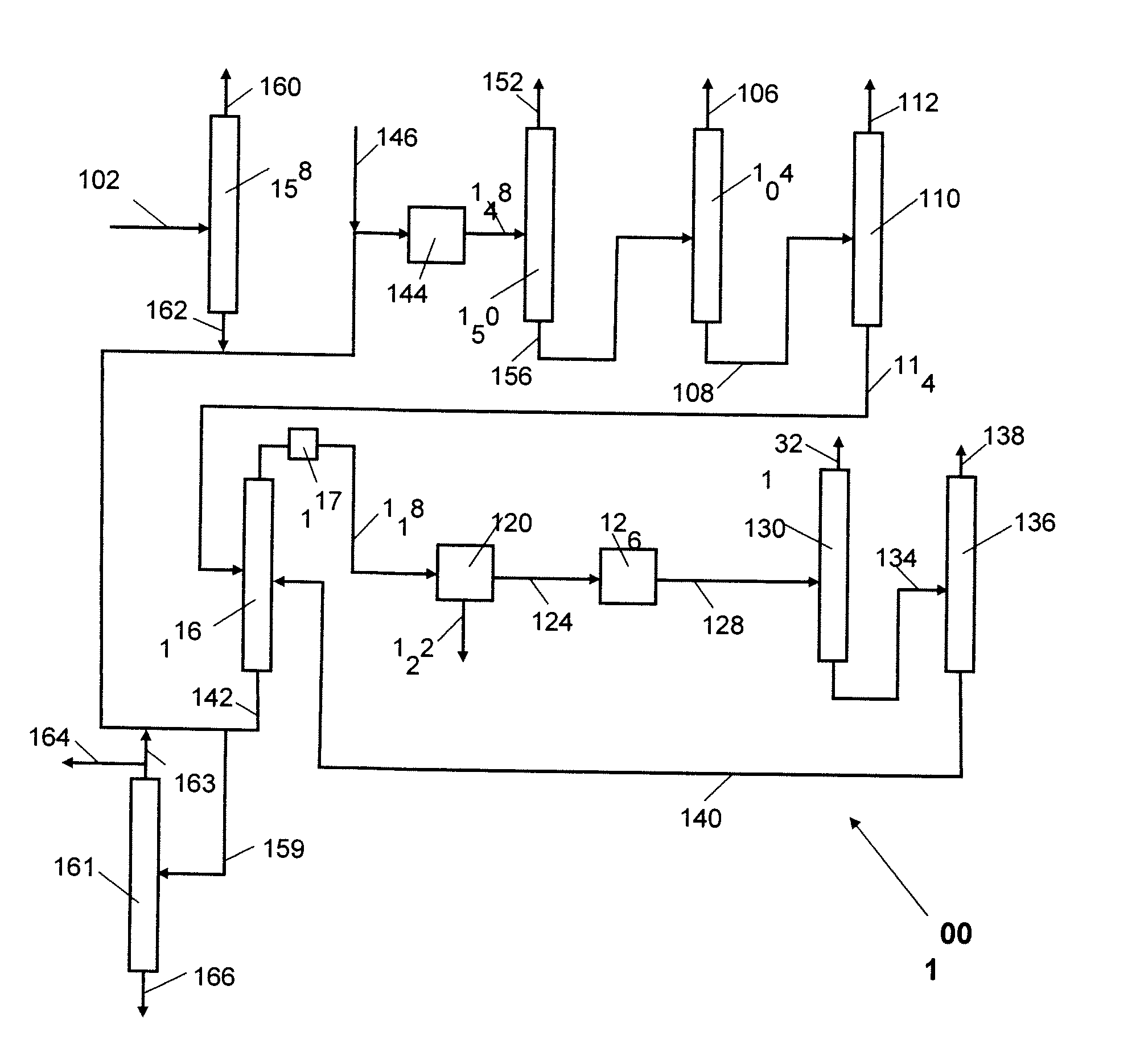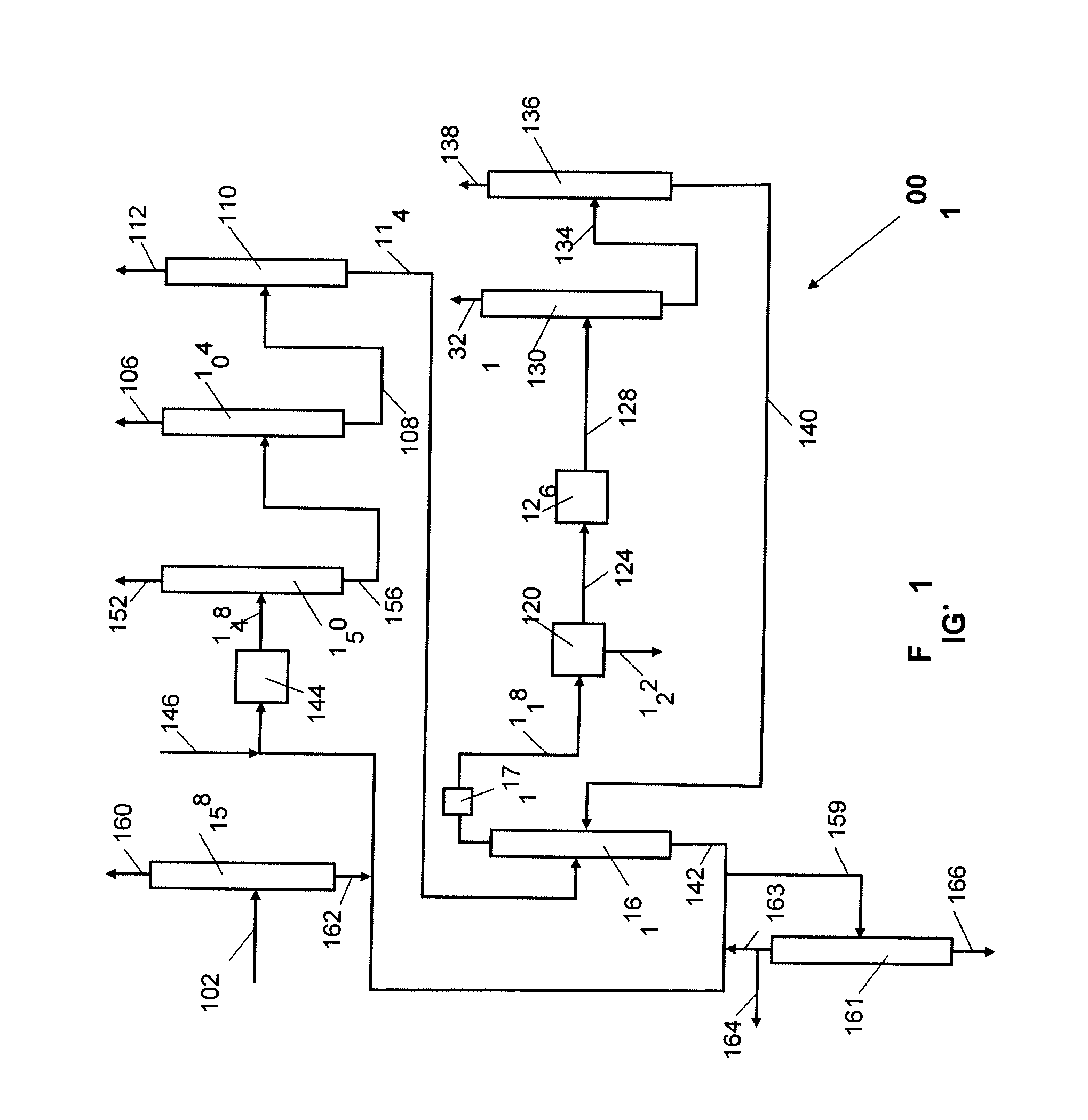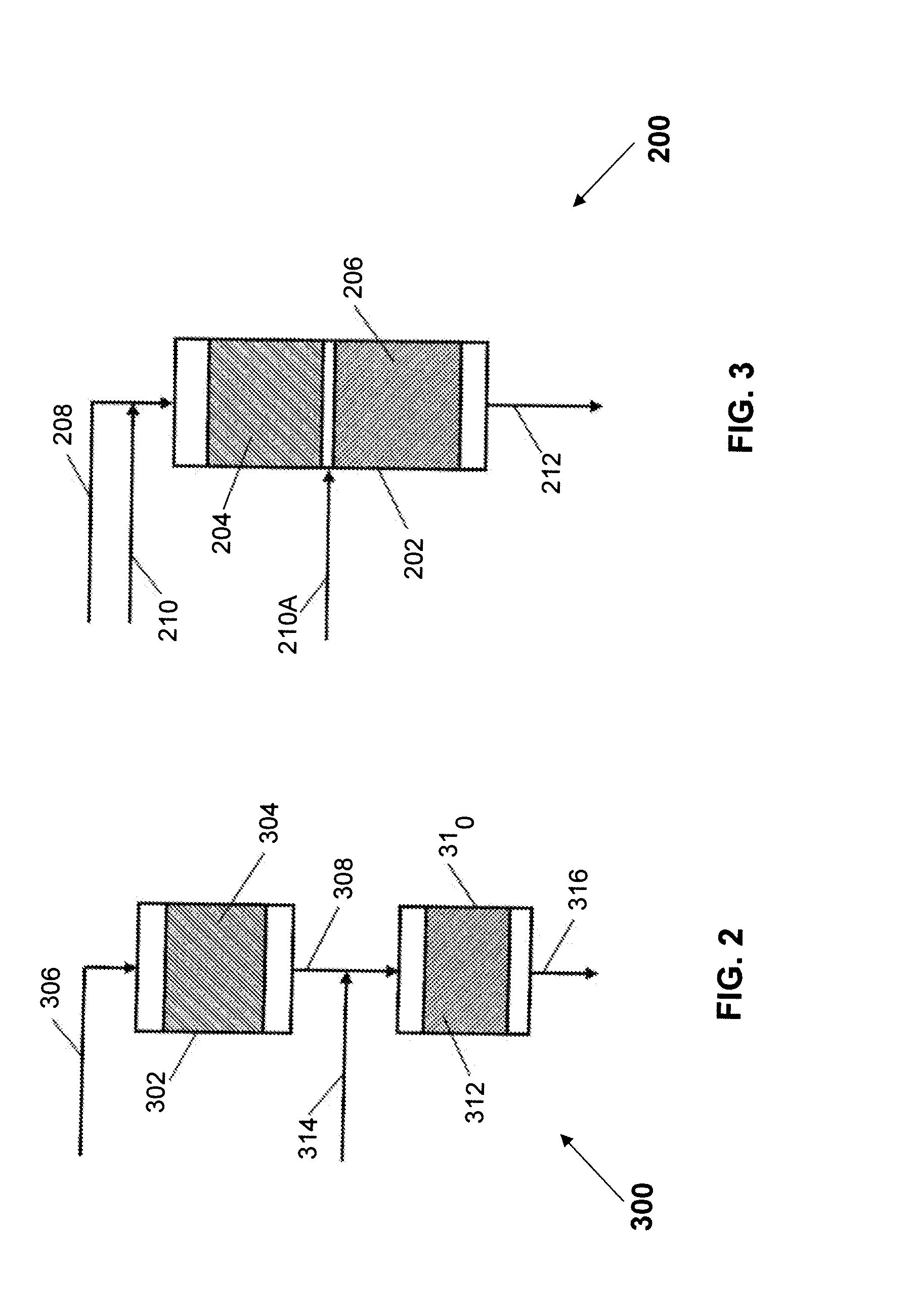Xylene Production Processes With Integrated Feedstock Treatment
a technology of xylene and feedstock, applied in the direction of hydrocarbons, chemistry apparatus and processes, organic chemistry, etc., can solve the problems of reducing catalyst life, negative impact on product quality and process efficiency, aromatics and olefins, etc., to reduce or eliminate catalyst life, reduce capital and operating costs, and increase the concentration of xylene
- Summary
- Abstract
- Description
- Claims
- Application Information
AI Technical Summary
Benefits of technology
Problems solved by technology
Method used
Image
Examples
Embodiment Construction
[0013]Processes and apparatus for the production of xylene isomers are disclosed, for instance, in Robert A. Meyers, Handbook of Petroleum Refining Processes, Second Edition, McGraw-Hill, 1997, Part 2. In a conventional process, a xylene production facility feedstock comprising C8 aromatics and olefins is fractionated to remove benzene and toluene, then subjected to fractional distillation in a xylene column to provide a C8 aromatic stream from which one or more xylene isomers of interest is recovered. The most sought isomer is para-xylene, although ortho-xylene and meta-xylene do find commercial applications. After separating the sought xylene isomer, the remaining stream is isomerized and recycled to the xylene column which also provides a higher boiling fraction containing C9+ aromatics. The C8 containing feedstock may be fractionated in alternative ways such as separating the C9+ aromatics first followed by removing the C7− aromatics in the xylene column.
[0014]A C8 containing ar...
PUM
| Property | Measurement | Unit |
|---|---|---|
| Boiling Point | aaaaa | aaaaa |
| mass percent | aaaaa | aaaaa |
| mass percent | aaaaa | aaaaa |
Abstract
Description
Claims
Application Information
 Login to View More
Login to View More - R&D
- Intellectual Property
- Life Sciences
- Materials
- Tech Scout
- Unparalleled Data Quality
- Higher Quality Content
- 60% Fewer Hallucinations
Browse by: Latest US Patents, China's latest patents, Technical Efficacy Thesaurus, Application Domain, Technology Topic, Popular Technical Reports.
© 2025 PatSnap. All rights reserved.Legal|Privacy policy|Modern Slavery Act Transparency Statement|Sitemap|About US| Contact US: help@patsnap.com



